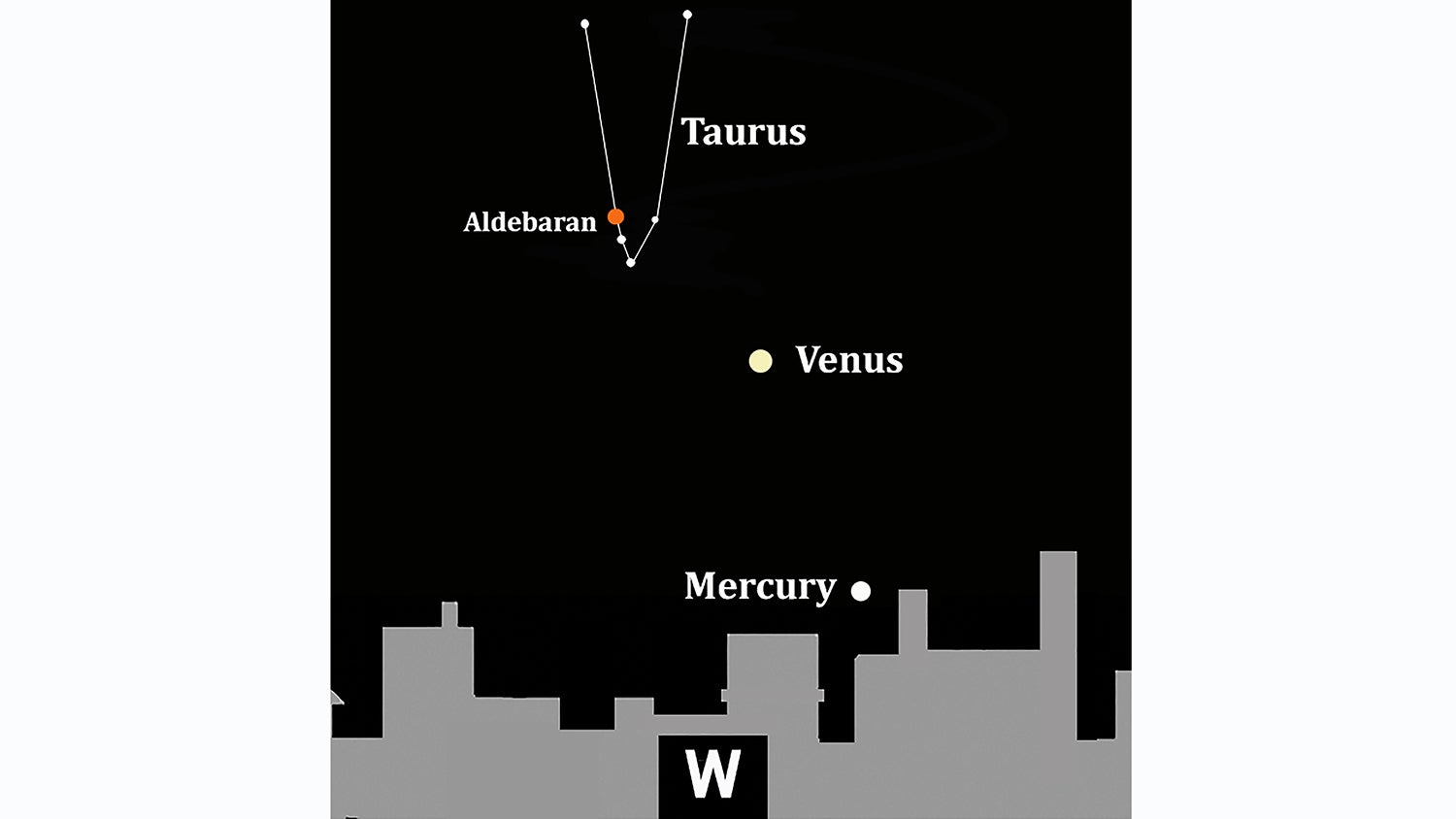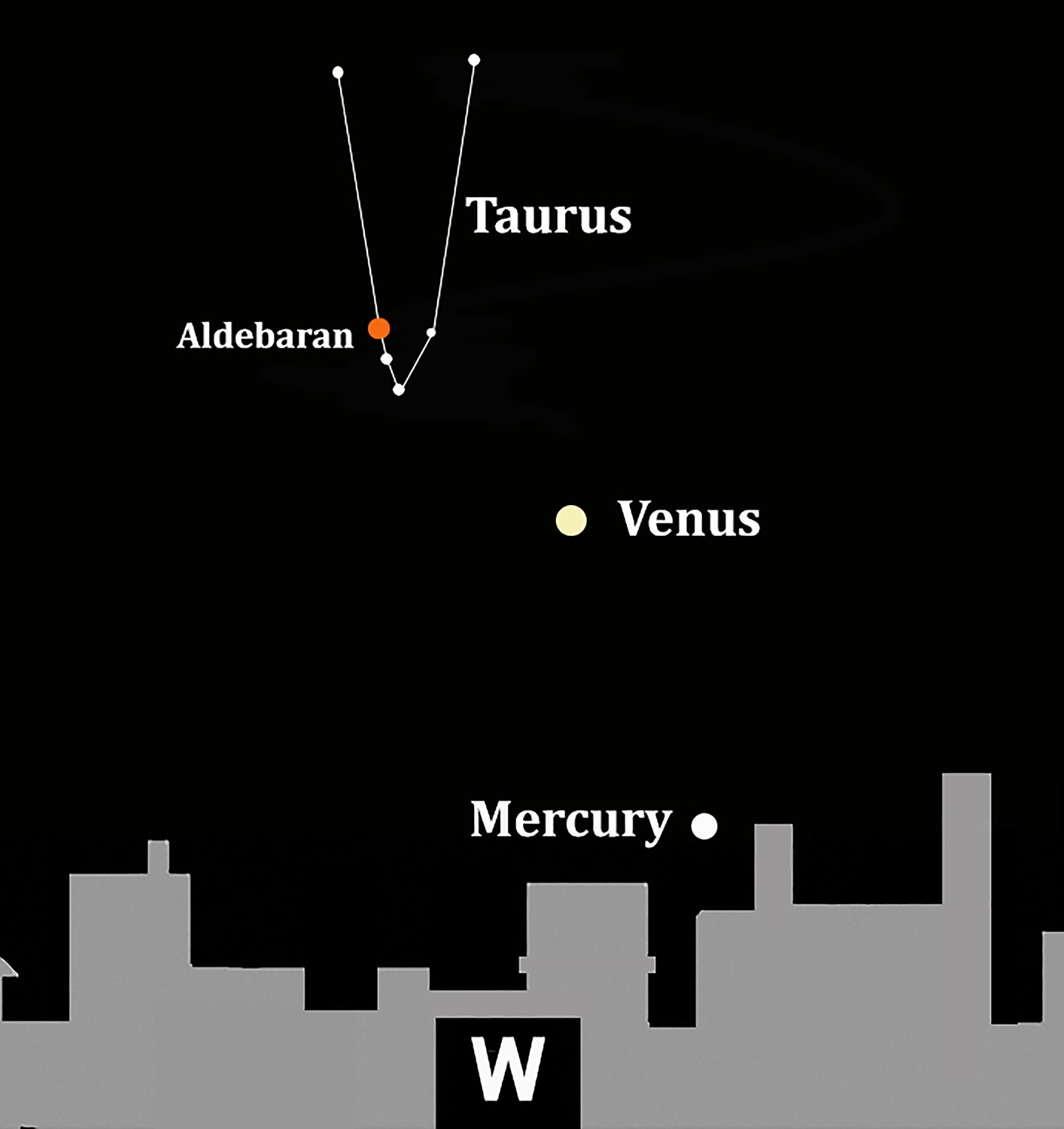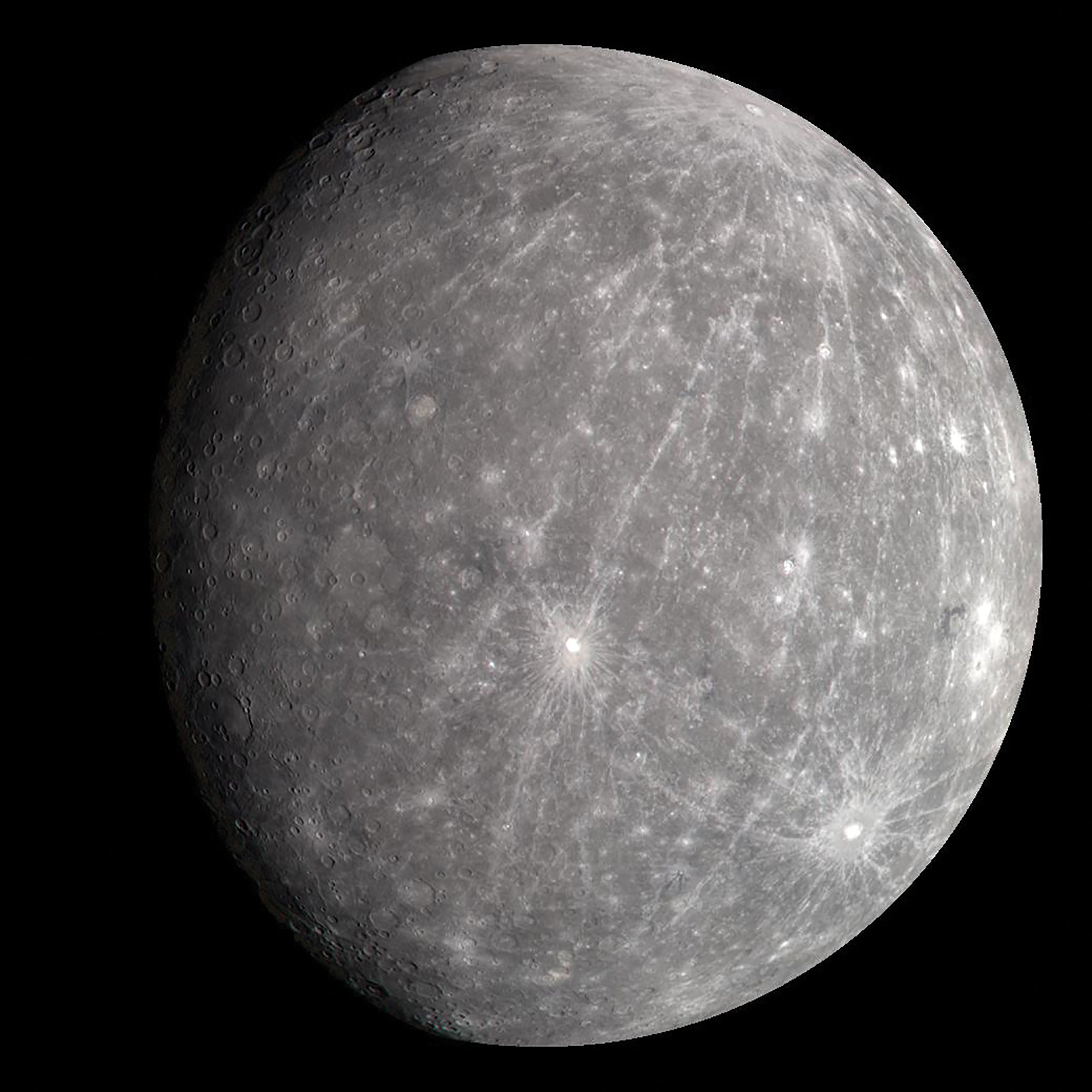A glimpse at speedy Mercury is possible over next weeks
Published 12:00 am Sunday, March 26, 2023

- The night sky, facing west at 8:30 p.m. on April 11, when Mercury will reach its highest point low over the horizon. (The Ironton Tribune | Heath Harrison)
Inner solar system on display for early April
In Greek mythology, the fleet-footed Hermes was the messenger of the gods, known for his swiftness and winged sandals.
And, when the Romans co-opted the tales of the Greeks and adopted them into their own mythology, he was renamed Mercury, a name that was bestowed, fittingly, on the smallest planet in our solar system.

The night sky, facing west at 8:30 p.m. on April 11, when Mercury will reach its highest point low over the horizon. (The Ironton Tribune | Heath Harrison)
With an orbit of just 88 days, Mercury completes its year faster than the any other.
With barely any atmosphere to speak of, Mercury is unprotected from the comets and meteors that typically burn up as they collide with other worlds, leaving its barren, rocky face scarred much in the manner of earth’s moon.
The world sees extreme temperature fluctuations, with its sunlit side reaching as high as 800 degrees Fahrenheit, while its dark side loses heat to space and dips to 290 degrees below zero.
Of the eight planets in our solar system, five — Mercury, Venus, Mars, Jupiter and Saturn — can commonly be seen to the eye, without the aid of a telescope.
However, as it is coolest to the sun, Mercury is often blotted out to observers and remains an elusive planet to find.
Like Venus, Mercury’s position as closer to the sun than Earth causes it to appear only in a short period before dawn or after dusk.
The planet can be seen easiest when it is at its greatest elongation, the point where its position is at such an angle that it appears at its furthest point from the sun.
And one of those periods is beginning now.

The planet Mercury, the closest to sun the sun in our solar system, is a lifeless, barren orb. It is both the smallest of the eight planets and has the shortest orbit around the sun, giving it the shortest window to be viewed from Earth. (NASA/Johns Hopkins University Applied Physics Laboratory/Arizona State University/Carnegie Institution of Washington)
To find Mercury, look just after sunset tonight to the west. There, in the twilight, you should see Venus shining brightly about midway up in the sky.
By looking down and slightly to the right, just on the horizon, you will find two planets, easy to spot, as there are no stars in the region bright enough to overcome the twilight.
One is Jupiter, the brighter of the two, which has been visible for the last several months and is beginning to set for the spring. And to its right, you will find Mercury.
You will need a low horizon to spot them, as they only rise about five degrees above the sunset (half the height of a clenched fist extended to arm’s length). Both will remain in sight for less than an hour after sunset)
As the next two weeks progress, Jupiter will continue to set, disappearing entirely at sunset, while Mercury will rise slightly, reaching its peak elongation and best viewing on April 11, when it will reach the height of a full fist over the horizon and remain visible slightly more than an hour after sunset.
In following days, it will begin to move closer to the sun, quickly disappearing until it reappears later in the year as a morning planet.
Like its namesake, Mercury is hard to catch, but, with a little patience and knowing where to look, one can do so.
Heath Harrison is The Ironton Tribune’s community editor and has been fascinated by the night sky since reading H.A. Rey’s “Find the Constellations” as a six year old.





